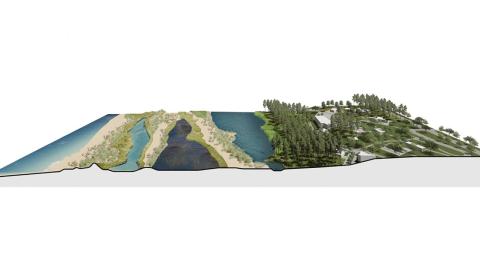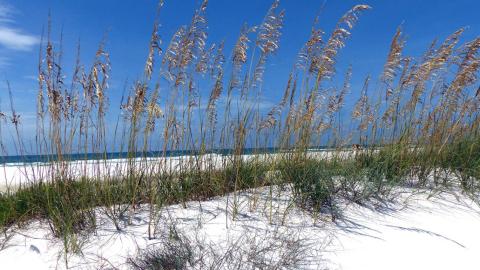Tyndall Air Force Base, Panama City Beach, Florida
Coastal resilience in support of mission assurance and becoming an Installation of the Future
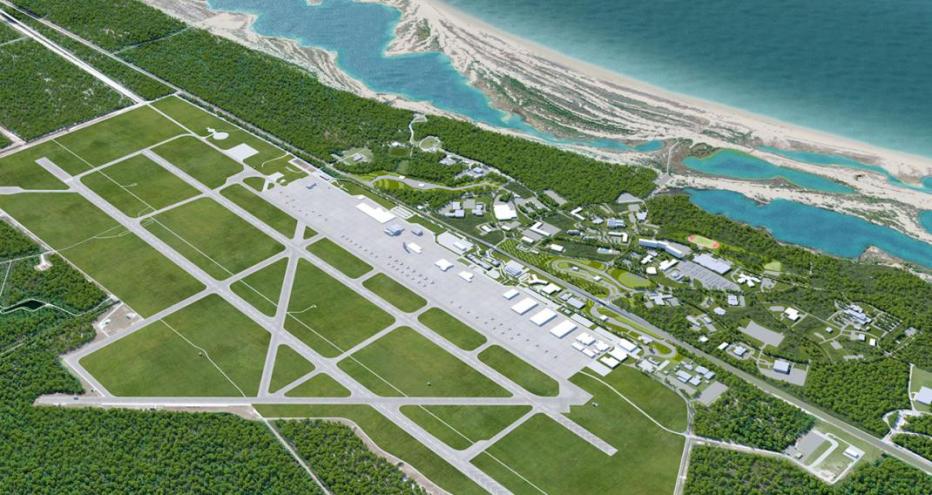
In October 2018, Tyndall Air Force Base (AFB) was hit with a Category 5 hurricane which resulted in damage to 100% of its assets. As a result, they have embarked on a rebuilding program that is focused on creating a resilient, sustainable and smart Installation of the Future that leverages innovative solutions in a “system of systems” approach to perform at the nexus of mission assurance, cost efficiency, and social and environmental sustainability.
The Jacobs Team joined the emergency response effort in March of 2019, supporting the program in numerous ways, including the focus on coastal resiliency. A significant component of ensuring the future resilience of the base is addressing the risks that arise from coastal flooding and erosion. As part of the approach, the Tyndall AFB Rebuild Team is exploring a series of pilot projects that use nature-based solutions to reduce coastal flood risks while creating important social and environmental benefits.
-
100 %
of assets damaged by Category 5 hurricane
-
4
nature-based coastal resilience proposed pilot projects
“The Jacobs team really brought the best experts to consider ways to help nature heal itself along the coastline of Tyndall AFB, to include the barrier island areas as well as the tidal flats and marshes of the East Bay on the north side of the installation. Their contributions have been based on facts, science, and logic. The team has provided valuable expertise that has helped the Air Force team capture the attention of a number of governmental and private entities who could serve as great teaming partners to explore these pilot projects.”
Managing Coastal Flood Risks
Due to its coastal location, Tyndall AFB is vulnerable to extreme weather that can produce high winds, extensive rainfall, and storm surges from the Gulf of Mexico. Storm surges can generate high water levels capable of inundating low-lying parts of the base on both East Bay and the Gulf side. These risks are expected to increase over time as sea levels rise. There are a few strategies for managing coastal flood risk – making infrastructure resilient to flooding, moving infrastructure out of harm’s way, elevating structures so that they are not damaged, and building defenses to keep marine waters out.
Coastal defenses can take many forms; in most cases, these systems include traditional structures such as walls and levees, as well as a range of nature-based approaches such as beaches, dunes, and marshes. Nature-based solutions, many of which have been used for decades (such as beach renourishment), are particularly attractive because they can be less costly, be self-maintaining and offer a range of co-benefits associated with nature habitats (like habitat for threatened and endangered species, and recreational use). Nature-based solutions can be used alone or in combination with other approaches to provide multiple lines of defense against storms.
Coastal installations face a range of risks due to extreme weather, sea level rise and storm surge. Jacobs and the emergency response team helped Tyndall AFB develop their approach to pursue coastal resilience using innovative planning, engineering and partnerships. This approach reconciles UFC requirements and the various climate change, resilience and adaptation directives into a coherent approach that supports mission assurance, cost effectiveness and pursuit of the goal of becoming a resilient, sustainable and smart Installation of the Future. A key focal point will include the "system of systems" approach that integrates grey, green, and natural infrastructure to increase resilience while creating locally relevant shared social, environmental and economic benefits.
You might be interested in...
From our newsroom
-
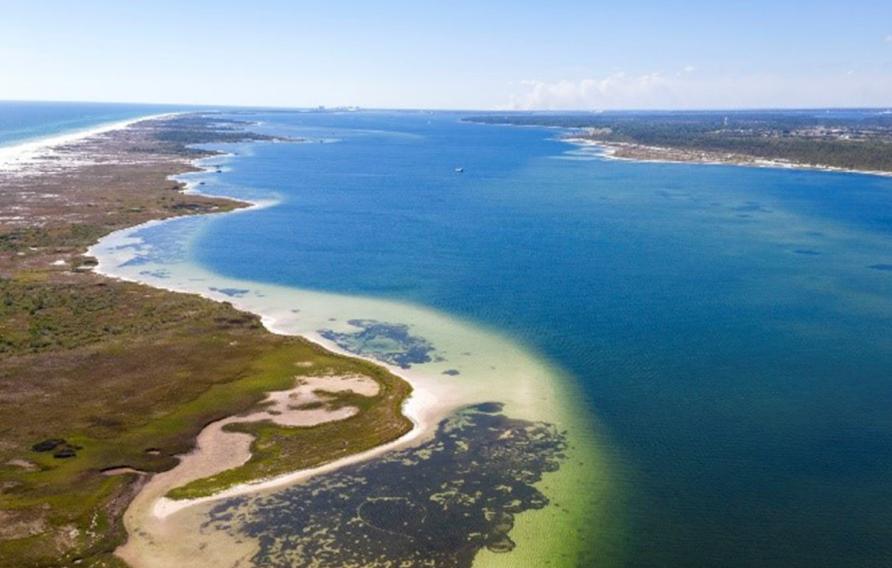 News
NewsTyndall Air Force Base Coastal Resilience Program Receives Presidential Federal Sustainability Award
The Tyndall Air Force Base Coastal Resilience Program has been recognized with a Presidential Federal Sustainability Award. Read how Jacobs supported this model for nature-based coastal resilience.
-
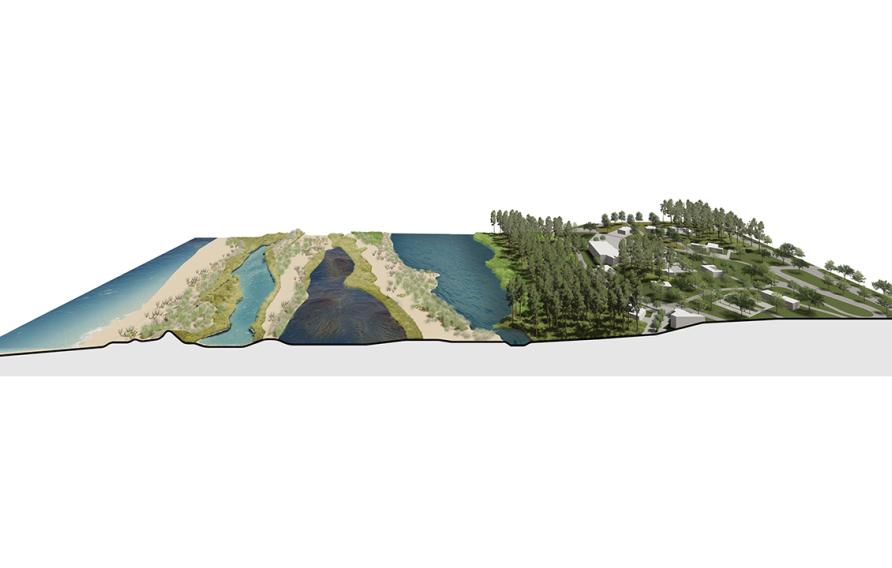 News
NewsTyndall Air Force Base: Coastal Resilience in Support of Mission Assurance and Becoming the Installation of the Future
A significant component of ensuring the future resilience of the base is addressing the risks that arise from coastal flooding and erosion. As part of the approach, our Tyndall AFB Rebuild Team is exploring a series of pilot projects that use nature-based solutions to reduce coastal flood risks while creating important social and environmental benefits.
-
 News
NewsFrom Seashells to Sand Dollars: Finding Funding for the Tyndall Coastal Resiliency Program
Dr. John Mogge, Jacobs’ Director of Federal Solutions & Technology, and Lieutenant Colonel Brandy Smart, Commander of the 325th Civil Engineer Squadron, talk about Tyndall Air Force Base, coastal resiliency and alternative funding.
-
 News
NewsJacobs Receives Excellence Award for Tyndall AFB Coastal Resiliency Program
Jacobs has received the International Excellence Award from the United Kingdom's Environment Agency Flood & Coast Excellence Awards for the Coastal Resilience Program at Tyndall Air Force Base in Florida.
In the media
Engineering News-Record: Five Years After Cat-5 Hurricane Hit, Florida AFB's $5B Rebuild Focuses on Resilience (Luce Bassetti)













































